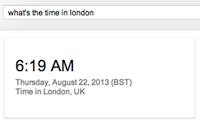10 Tips to the Top of Google

Ten years ago, creating a website and getting found in Google wasn’t hard to do. Choose a domain. Learn some basic HTML code. Do some keyword research. Create some title tags and meta tags. Write about 250 words. And for the most part, you were done.
With Google’s more recent quest for quality, authenticity, authority, and usability, however, many of of the tips that could help get your site to the top of Google 10 years ago might not produce the same results today.
Here are 10 top tips on how to optimize your site for Google’s algorithm today and beyond.
1. Learn & Implement Marketing Basics
Start with a plan, not a prayer.
It doesn’t matter if it’s SEO for a mom and pop store, or a national online retailer. Attacking SEO without a plan is like trying to row a boat with no oars – you might eventually get somewhere, but it won’t be where or when you wanted to arrive.
When I hired my first employee at my agency in 2002, the first thing I did was have them read the excellent “Marketing for Dummies” book, that lays out some basic principles. (they have a great marketing cheat sheet for reference)
Answer (at least) these questions:
- What is your expertise?
- What is your differentiation?
- Why should users care?
- Which users (age, locations, interests etc.) should care?
- What is the message and / or media that is going to connect with them?
- Who is your likely competition?
- Why should Google rank you higher than your competition?
Plan a strategy for your content, including; topics, timelines/editorial calendars, distribution (don’t forget PR), and schedules and frequency. The goal is to exist with a “sizzle”; a reason to rank and/or some expertise worthy of interaction.
2. How to Structure Your Site
Plan your site for topical expertise, organized in a well-siloed, easy to navigate structure.
Structure your site around intent-based topics, ensuring content is siloed and distinct (cross-link to relevant and related topics only). Dividing up your site into relevant content topics gives both users and search engines an easy way to identify your expertise, and relevant topics to rank for.
Unless you’re Amazon.com, it’s difficult to be an expert at everything. Better to dominate a niche than try to be everything to everyone – at the beginning at least!
BONUS TIP: If you’re always fighting with designers developers and marketing managers over how SEO ruins usability, don’t despair! Demonstrating successes in SEO often quash the naysayers, so save some gray hair and first shoot for the “least imperfect” site feasible, and then work toward the perfection you desire once you’ve convinced your detractors of SEO value!
3.Build a Digital Footprint
It’s not just about search engines. Embrace traditional marketing, outreach, partnerships, social, guest blogging, inspired mentions, and good old-fashioned relationships.
With that in mind, I took it on myself to relabel SEO as “Search Everywhere Optimization“ because as SEO folks we are hoping to affect the visibility of our clients sites in many venues on the web, which then creates better visibility in the search results, and more search clicks organically.
With the Search Everywhere mantra, SEO practitioners can finally expand beyond just traditional SEO responsibilities and dabble or partner with PR, social, partnerships, sponsorships and other traditional offline opportunities that get people talking online about brands and their expertise. This includes great events like SES Conference, working with nonprofits and in-store promotions, all of which can fuel the content machine and distribute content and create connections organically: a Digital Footprint.
The goal of a Search Everywhere strategy isn’t to replace traditional marketing agencies, however. It’s about SEO professionals working with them to ensure that every marketing initiative considers the opportunity of creating share-worthy content that can be placed and amplified online via outreach, social and/or PR channels.
The Digital Footprint you create isn’t just for inbound marketing though. Google, as a massive “connections engine,” uses connected entities to assess the trust and authority of sites, companies, individuals, and brands (which really encapsulates all three), leading to the earning of greater topic visibility (i.e., relevant rankings/traffic).
NOTE: It’s not just about links, it’s about citations, connections, mentions and associations. Who you’re ‘seen’ with online matters!
4. Design for Multiple Screens
Create a user-friendly site design that works well and fast across all devices – especially mobile and tablet.
What’s often forgotten in the race to comply with a scary (for some) Google mandate, is that Google isn’t saying every site should be using the same technology, solutions or share the same usability elements. Google understands that some sites need to have a mobile version (this is a site that has it’s own URL structure – normally hosted on an m. sub-domain or within a mobile sub-directory or a main site) and some need a responsive website design (RWD) that adapts to the device used to access it.
NOTE: Responsive design isn’t a brand new idea, but having (almost) ubiquitous browser support is!
There are various resources that provide the hows and how tos, (even Google gives some good details) but the process must begin with a site review on different devices to see if:
- Different screen sizes present obvious and usable interfaces
- Mobile or tablet users see views customized to their devices
- Interface changes based on platform or device are logical and maintain *some* consistency across platforms
- From an SEO standpoint, best practices are followed so that Google / Bing recognized the difference between device specific sites (if different sites exist) and this mitigates potential duplicate content issues
5. Conduct Keyword Query Research
Research keyword queries leveraging social, web stats, paid media and industry research to help understand user goals, purchasing cycles, and needs.
What does this mean?
Search engines are interpreting each search through a lens of intent and context.
- Intent: What does the user mean based on previous searches, their search behavior?
- Context: Where are they? What device are they using?
- Both:
- Machine learning: What do I know about this and similar users who have searched for this term (e.g., click behavior, engagement signals)?
- Connections: If I can identify this user, what information from his connections would help or influence click and / or search behavior?
For example, a user searching using the query “price of tea” might be looking for an online tea purveyor, spot price in the commodities markets, Starbucks price list, or, if they’re standing outside a Teavana store, a comparison of their prices. If you’re Teavana, you want to make sure that a “price of tea” pages is optimized around comparisons – mentioning advantages over Starbucks, value proposition of loose leaf tea, and details of how to purchase online (or in the local store), and not commodities!

Google and Bing are both trying serve up the best answers feasible, and to present a quick path-to-answer improved “direct answers” with those answer appearing within the search results themselves.
Keyword query research is a fundamental need for any SEO campaign. Thinking through the lens of a user query, as opposed to just focusing on keyword volume, can help drive more valuable organic traffic.
By connecting user intent to website content, SEO practitioners can enjoy – potentially – a higher level of relevant search engine traffic that both engages and converts more efficiently.
6. Write Just Enough Content
There are no “ideal lengths” of content, only enough to satisfy user intent and the context in which they’re querying.
Here’s the real truth about word counts:
Write just enough and not too much!
There really is no ideal length, but there isan ideal question: “Should this page exist?”
The answer should consider primarily:
- The page’s uniqueness (based on other pages on the site).
- Its uniqueness (based on other pages on the web).
- Its value to users (does it answer a question they may have? FYI, analytics is your friend for engagement metrics!).
- Its accessibility from a site’s homepage (via clicks).
- The content’s ability to provide value with the correct media (image / video / text) so users are potentially inspired to share it!
Also, with Google’s launch of “long form” modules in the results page, the need not to count words, keywords, paragraphs, and characters.
RECOMMENDED: Increase Website Traffic With WhatsApp
Want to add something to the post? Share it in the comments section below.. And don't forget to check out the other posts of #YouMashBlog..And Tomorrow(29th Jan) is my Birthday!! Hope all of you will be wishing me tomorrow on Twitter(@SaikatGhosh_lok) and Facebook(LINK), and maybe through the comments in this posts..







No comments:
You are welcome to share your ideas with us in comments!